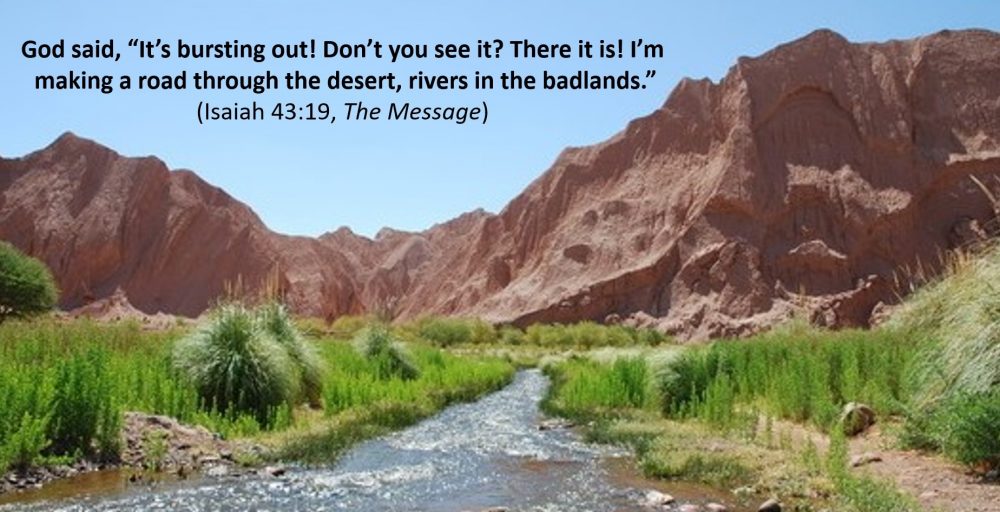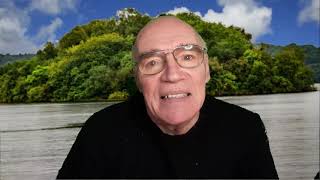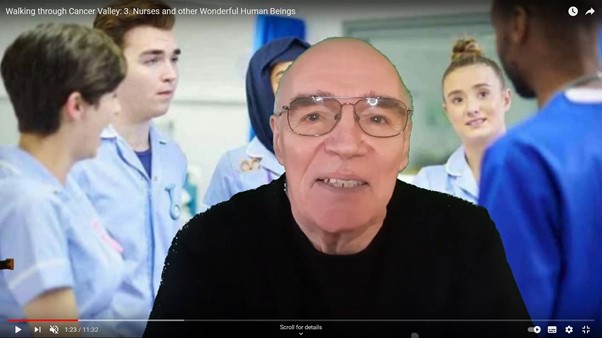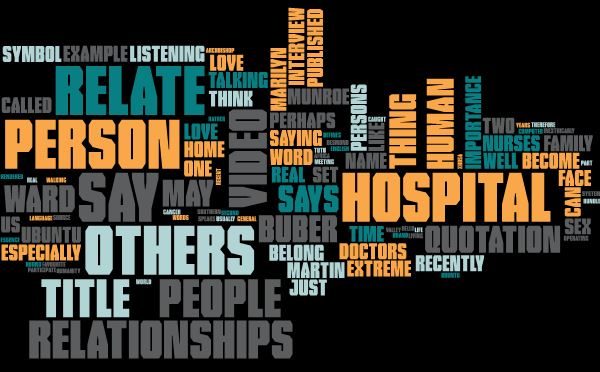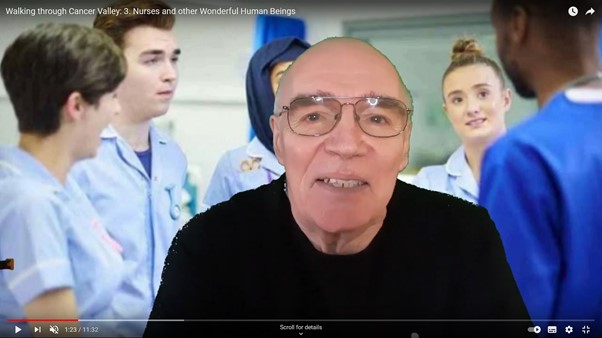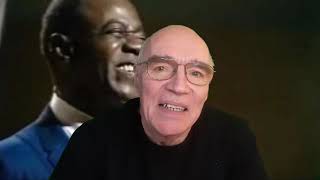
This is the text of a video on my YouTube channel entitled Walking through Cancer Valley: 5. Creation Sings and Creation Groans … and My New Body.
“Hello. This is the fifth and final video in the set entitled “Walking through Cancer Valley”. The title of this one is “Creation Swigs and Creation Groans … and My New Body”.
One of my most favourite songs is “What a wonderful world” especially as it is sung by Louis Armstrong.
Coming home from hospital both after my surgery but especially after the time I was so very ill over Christmas and New Year was for me a fresh and more vivid experience of the sights and sounds of the physical creation – the songs of the birds, the sound of the wind, the colours of creation, the shapes of the clouds and so much more. It all impacted me afresh and there’s a verse in the old hymn “Loved with everlasting love” which goes like this:
Heaven above is softer blue,
Earth around is sweeter green;
Something lives in every hue
Christless eyes have never seen:
Birds with gladder songs o’erflow,
Flow’rs with deeper beauties shine,
Since I know, as now I know,
I am His, and He is mine.
It was that kind of experience of the beauty of this wonderful world. But, you may well say, that’s not the whole picture … and you are correct. In a spoken introduction to “What a wonderful world”, Louis Armstrong says this: “Some of you young folks have been saying to me, ‘What do you mean, what a wonderful world? How about all them wars all over the place? You call them wonderful? And how about hunger and pollution? They ain’t so wonderful either.” And he goes on to respond: “It seems to me that it ain’t the world that is so bad but what we are doing to it”. This was recorded way back in 1970 but how much more aware we are now of what we human beings, our sinfulness and our greed, is doing to the physical world!
So there are two sides to the story. On the one hand, Creation sings. The book of Job in the Bible talks of how the morning stars sang together and all the sons of God shouted for joy. That’s in Job 38, verse 7. And we can listen to Creation, we can hear its music. I hear the song of the robin asserting its territory from the tree outside our house early in the morning. Creation singing, the sound of the waves on the seashore, the sound even of the thunder in the sky. But that is not the whole story, not the whole picture. In his letter to his friends in Rome, Paul writes this. He says, “the whole creation has been groaning as in the pains of childbirth right up to the present time”. That is in Romans 8, verse 22. Creation groaning and the pain is not the pain of death but of a longing for the new redeemed creation yet to be born.
Creation sings; Creation groans. Is this not another example of the two hallelujahs, (Frederick Handel’s ‘Hallelujah Chorus’ one and Leonard Cohen’s “broken hallelujah”?! There are two hallelujahs within us and there are two out there everywhere. It is hardly surprising because we are physical beings, we’re part of the physical creation, made of the chemical elements that are everywhere. Carl Sagan said, “The cosmos is within us. We are made of star-stuff”, he said.
Because of the surgery that I had and its life-changing impact, I’ve become very much more aware of my physical body and its functions … and of its frailty and, yes, of its mortality. But I believe that one day I will have a new body which in some way is going to be continuous with the body that I now have. The risen Jesus came to his friends and they thought they were seeing a ghost but he said, “Touch me and see; a ghost does not have flesh and bones”. That is in Luke 24:39. Then he asked for something to eat and they gave him a piece of fish and he took it and ate it. A ghost doesn’t eat fish! We are not going to be body-less souls sitting on clouds playing harps. We will have new physical bodies and live in the physical world made new.
Two Bible passages as paraphrased by Eugene Peterson:
“I heard a voice thunder from the Throne: ‘Look! Look! God has moved into the neighbourhood, making his home with men and women! They’re his people, he’s their God. He’ll wipe every tear from their eyes. Death is gone for good—tears gone, crying gone, pain gone—all the first order of things gone.’ The Enthroned continued, ‘Look! I’m making everything new’.” That is Revelation chapter 21, verses 3-5, in The Message.
And this passage:
“Jesus Christ … will transform our earthy bodies into glorious bodies like his own. He’ll make us beautiful and whole with the same powerful skill by which he is putting everything as it should be, under and around him.” That is Philippians 3, verse 21, in The Message. What a prospect!
Thank you for walking with me through Cancer Valley as I’ve tried to share some of the experience of this walk with you. Much of it has been about relationships. Relationships with other people as in the video “All real living is meeting” and indeed in the video about nurses and other wonderful human beings. Relationship with self, perhaps particularly in the video about the shalom-ful gift, the inner peace, the gift of Jesus. And in this one the relationship with the physical Creation, the wonderful world. But all of these are transformed by the most important relationship of all which is relationship with God, relationship with the Lord. When we’re in right relationship with him, when all the badness, all the wickedness, all the things we’ve said, thought, done are forgiven, when there’s nothing between us and him, it transforms our relationships with one another, our relationships with the physical world including our bodies, our relationship with ourselves.
Thank you. Thank you for walking with me. God bless you real good.”
